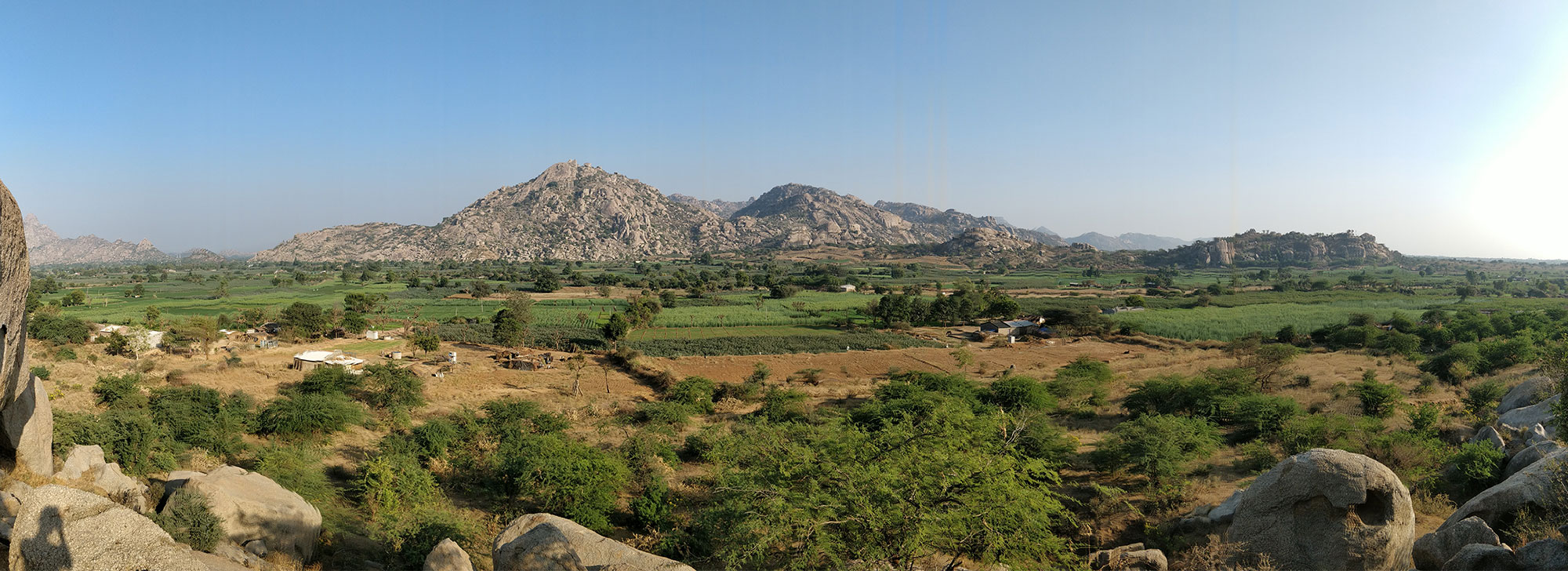
Banaskantha
Category Flora - Fauna |
Nearby Places 9 Place(s) |
Approx. Time to Explore
1.25 Hour(s) |
Reviews
|
About the Park: Balaram Ambaji Wildlife SanctuaryUndulating hills of Aravali, supporting the dry deciduous forests of North Gujarat, provide an unimaginable beautiful ambience to Balaram-Ambaji Wildlife Sanctuary. The sanctuary derives its name from two historical temples- Balaram and Ambaji, situated at the opposite corners of the sanctuary. This picturesque area was constituted as a Wildlife Sanctuary by Government of Gujarat on 7th August' 1989 for the purpose of protection, propagation and development of wildlife and its environment.
The area is characteristically rich in floral diversity- particularly medicinal plants. It has numerous floral and faunal species of global conservation significance.
The rare flora comprises Kadaya (giving medicinal gum), Gugal, and Musali etc. The predominant trees are- Khair, Salai, Modad, Dhavada, Khakhara, Timru. During late winters (February-March) Khakhara- the flame of the forests- known by many different names such as- Palash, Tesu, Kesudo, Dhak etc. is generally in bloom with its striking red colour resembling flames in the forests. The rare animals include sloth bear, striped hyena, leopard, bluebull, porcupine, fox, small Indian civet, Indian pangolin and a number of reptiles including venomous and non-venomous snakes, monitor lizards, star tortoise etc. The rare birds of this area are adjutant Stork, spoonbill, osprey, white backed Vulture and black vultures. The area falls in the catchment of two rivers- Banas and Sabarmati.
Flora: The unique ecosystem harbours 483 species of plants including 107 of trees, 58 of shrubs, 219 of herbs, 49 of climbers, 40 of grass and 10 species of lower plants. Modad, khair, dhavado, saledi, kadaya, timru, khakhara, bor, desi baval, bili, dudhi, golar, kanji, indrajav, karanj, arjun sadad, jamun, behda etc.
Founa: Leopard is the top carnivore, which roams freely in the diverse habitat conditions.
Important Animals: Leopard, rhesus macaque, sloth bear, Indian civet cat, Indian porcupine, hyena, wild boar, wolf, jackal, hare, langur, bluebull etc.
Important Birds: The variety of birds inhabiting the sanctuary includes bulbul, Indian roller, woodpecker, grey hornbill, peafowl, barbet, shrikes etc. and many raptors.
Significance: Balaram Ambaji Wildlife SanctuaryThe forests of the sanctuary play an important role in conserving the depleting eco-system of Aravalis and in controlling the southward expansion of Thar desert. The forest areas, interspersed with numerous hills and hillocks form the watershed for Dantiwada and Dharoi dams of north Gujarat. It also constitutes part of the catchment areas of Sabarmati and Banas, which are two important rivers of north Gujarat. The ecological boundaries of the sanctuary get amalgamated with forests of Rajasthan State in the north and spreads into agricultural fields all around providing ecological security and ameliorated environment to the semi arid region of North Gujarat which is threatened by expanding desert.
Threats to The Ecosystem: Balaram Ambaji Wildlife SanctuaryThe frequent droughts, enormous biotic pressure, lopping, encroachments, lack Of well distributed water sources and above all the fragmentation of habitat has resulted into disturbed food chain. These factors coupled with ever increasing demand of forest land for mining activities keep haunting the manager of the protected area.
Management Approach: Balaram Ambaji Wildlife SanctuaryApart from protection and conservation, the major activities include habitat management, rehabilitation of degraded areas and improving watershed health of the area, Construction of water holes and maintenance of water supply gets major thrust during pinch period. It is being attempted to blend the continuity of scientific wildlife management with modern day management options in order to achieve a desirable level of conservation and development of wild life and its habitat without ignoring the social responsibility of the resource.
Eco-development: Balaram Ambaji Wildlife SanctuaryThe resource development needs to be taken up by involving the local community in planning and management. Eco-development activities are planned in order to meet the basic needs of the people and to reduce pressure on the resource. The major activities include provision of drinking water, fodder development, soil and water conservation, alternative sources of energy, agricultural and horticultural development and various income generating activities.
Eco-tourism: Balaram Ambaji Wildlife SanctuaryThe picturesque hills of Danta, Ambaji and Amirgadh areas interspersed with nallahs and green vegetal cover, long wooded treks and rocky terrain form an ideal hunt for nature lovers, adventure groups for trekking, hiking and other eco friendly adventure activities. Organized eco-tourism is not in existence but the nature education is a well taken activity as a measure of awareness, interpretation and conservation education.
For more updates you can visit on Website: https://forests.gujarat.gov.in/wildlife-sanctuaries.htm
By road: The Nearest bus station is Palanpur (20 kms). Ambaji (within sanctuary) Abu Road (Rajasthan) 20 (kms.)
By rail: Palanpur - 20 kms.
By air: The Nearest airport is Ahmedabad (150 kms).